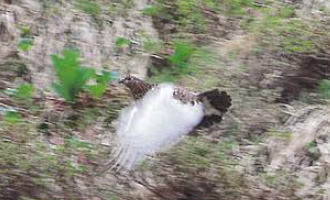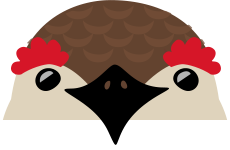
Nest and eggs
Rock ptarmigans lay their eggs sometime in early or mid-June. However, the exact timing is unknown; nests are usually found after the eggs have been laid and the mother is incubating them, but it is extremely difficult to find the nest while the mother is in the middle of laying eggs.
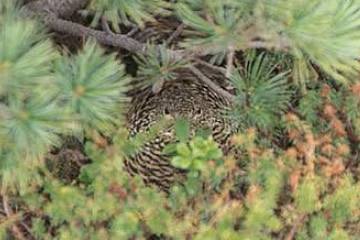
A female incubating eggs in her nest.
Nests are usually built in the middle of groves of creeping pines, or other places with a lot of overhead cover. However, there is a lot of variation; sometimes 'bare nests' are built with only a tiny amount of overhead shelter to the left or right. Some birds even construct their nests less than a meter away from walking paths, where people frequently pass by.
One time, an observer happened to stumble upon a nest while a female was in the middle of the egg laying process. There was one egg in the nest, which was no more than a dug-out circle, without any other nest-building materials. The nest morning, it was lined with dried leaves of bamboo grass, and there were two eggs inside. When the mother left the nest four days later, there were a total of five eggs that she had been incubating inside. From this example, we can assume that females lay eggs at a rate of about one per day, and that they do not prepare materials especially for building the nest. Instead, it would seem that when they hide the eggs with leaves, the same leaves are later used as nest lining to protect the eggs.
However, when observing other nests, it has been found that in some cases the mother only makes a superficial attempt to hide the eggs, throwing a couple of leaves backwards which do not even reach the nest. In some occasions, no nest materials are found even after the mother enters the incubation stage.
According to some data, rock ptarmigans lay three to eleven eggs per mating season, but over the 20 years that Tateyama rock ptarmigans have been studied, the number is two to eight eggs, with six eggs being the most common number laid (41% of the time) and seven being the next most common (31%). Five eggs are laid 22% of the time, and there have only been two examples of eight eggs laid and one example of two eggs. As well, there have been examples of individuals rebuilding nests after their first attempt failed; in these cases three to five eggs were laid. It is well-known that nests are often built under creeping pines. In Tateyama, creeping pines are used for cover 60% of the time, and a variety of other plants are used including bamboo grass, juniper, and members of the heather family.
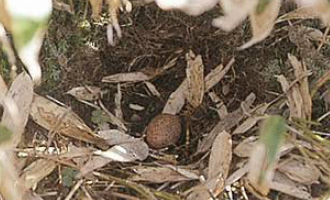
Nest with the first egg
There is hardly any nesting material.
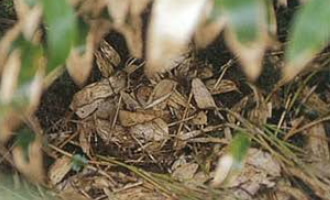
Hidden eggs
The mother hides the eggs when she has to leave the nest.
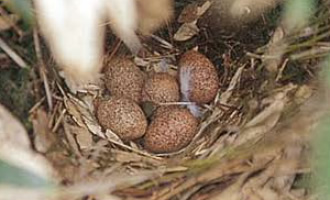
Nest after the start of incubation
Eggs are a reddish brown after being laid, but as time passes, they begin to turn white.
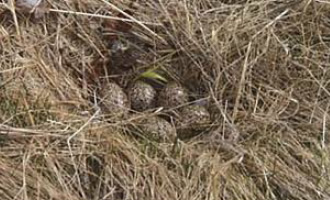
A nest with very little cover
The average number of eggs laid changes depending on the year, but in Tateyama it is most common to have six eggs per nest.
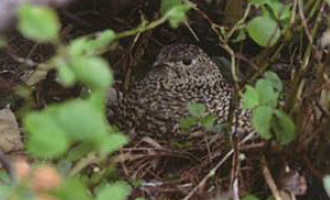
Diverse plants used for nest building
Of the rock ptarmigans in Japan, those in the Tateyama area display the most diverse selection of plants used for cover in building their nests.
